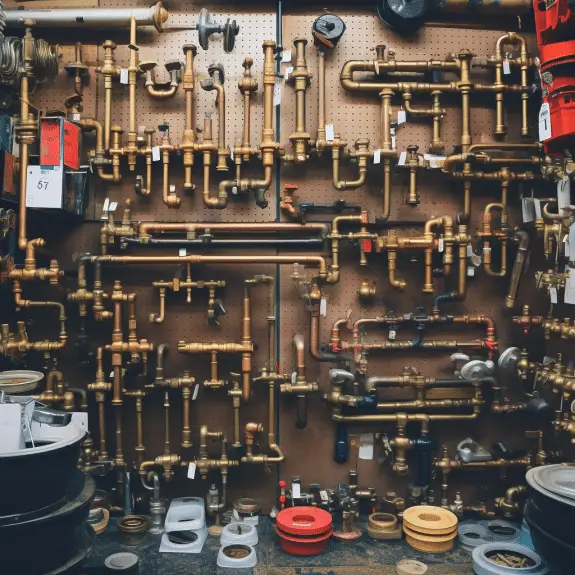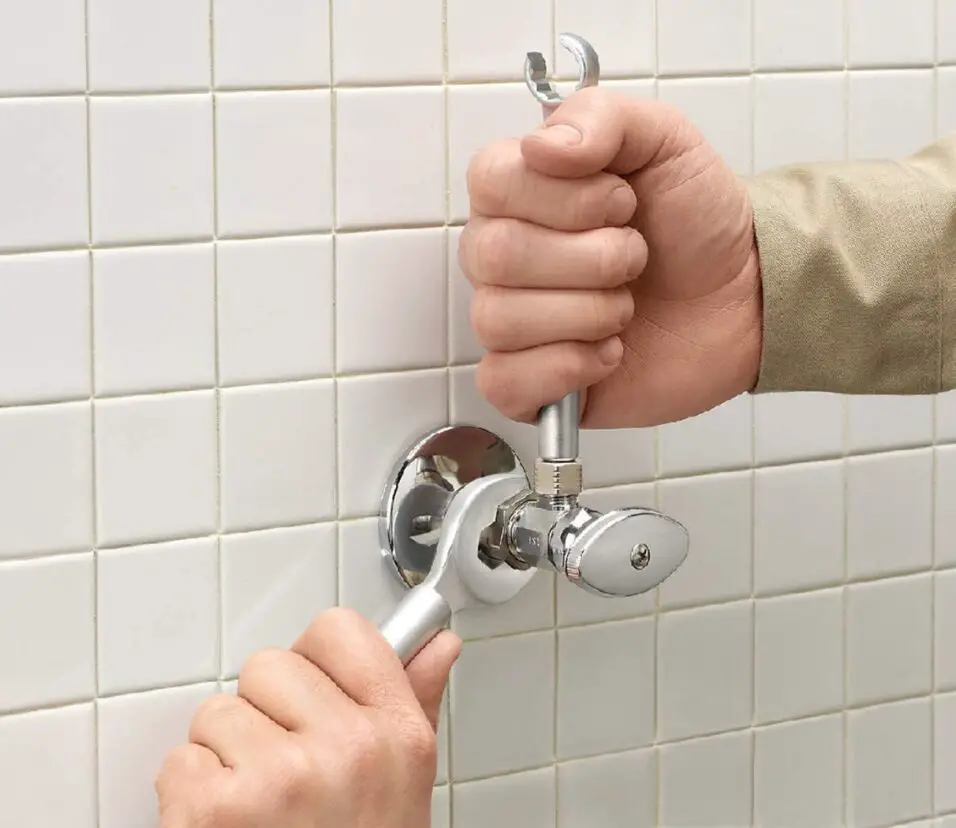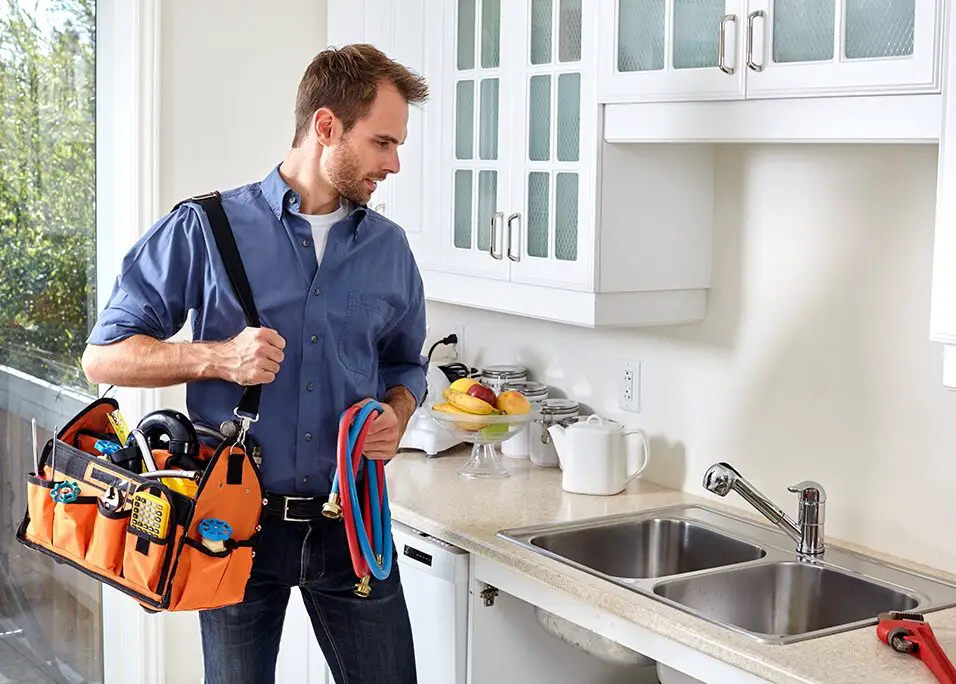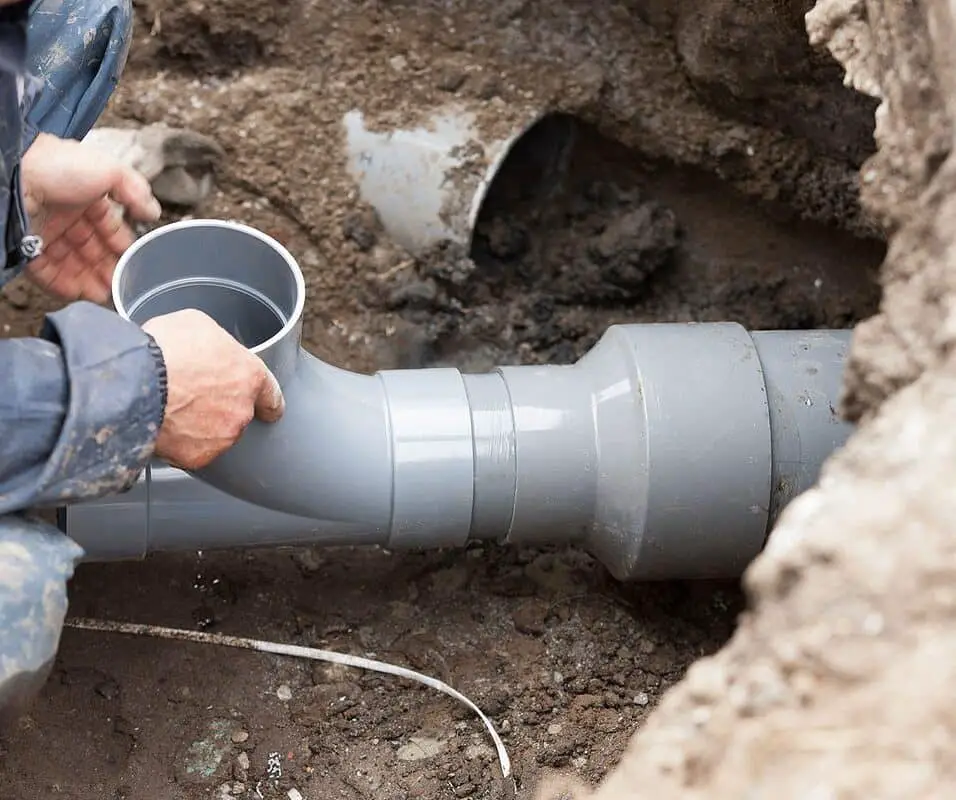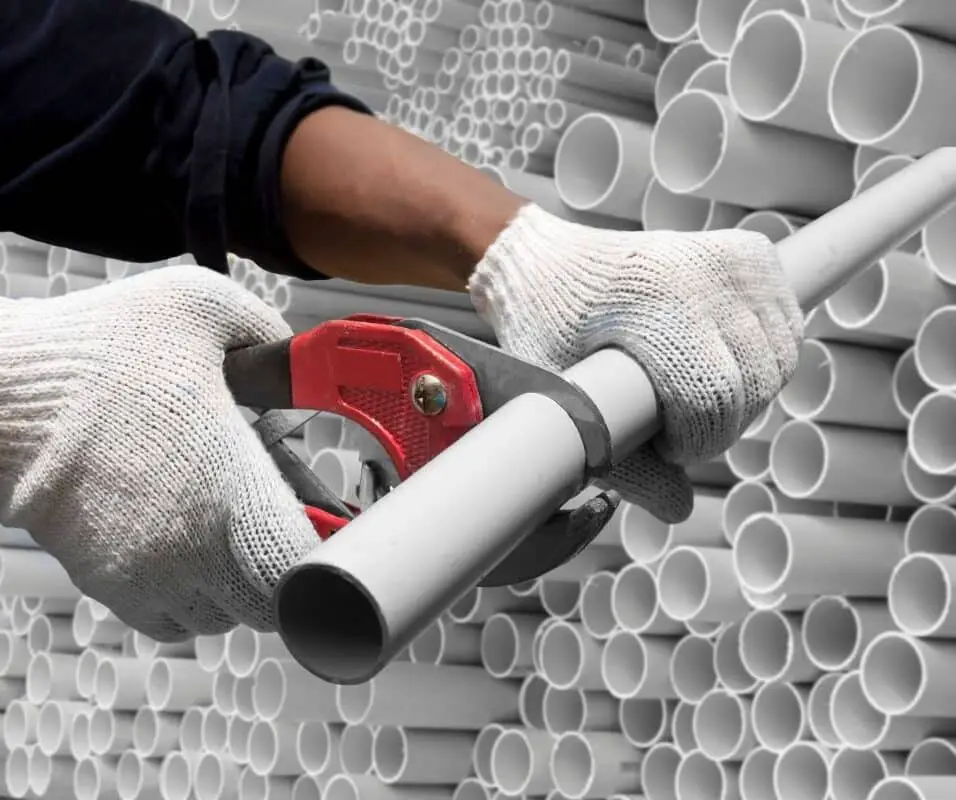Can You Have A Dishwasher Without Plumbing
Introduction:
Can you still get a dishwasher if you don’t have water? The dishwasher is an important part of a modern home. How we wash and clean food has changed a lot because of it. But most dishes are set up so that they need to be connected to the sewer system to get water and drain. But what if it’s not possible or you can’t get water? Can there be a machine with no plumbing? In this piece, we’ll look at some creative ways to use a dishwasher even if you don’t have normal plumbing.
People who can’t get new plumbing can get a sink that fits on their table. These little things are made in the kitchen to put on the table. They don’t need a water system and don’t take much work to set up. Some tabletop cleaners have water tanks that are built in and waste water tanks that can be taken out. These smart tools work well in small spaces or places where the plumbing doesn’t need to be changed. They get water straight from the sink faucet and drain through a tube that can be put over the sink.
A small machine is another choice. Like tabletop dishwashers, portable dishwashers are easy to move around and can be moved from one place to another. Because of this, they can be used by people who don’t have stable water. Bigger things like these can be moved to a certain spot.

Can I use a dishwasher without plumbing it in?
A machine that stands alone is great because it can go almost anywhere. Dishwashers that stand on their own can be connected to a drain and a water source without having to be plumbed in.
Yes, you can use a dishwasher even if it isn’t plugged in. There are movable and counter-top dishwashers that don’t need to be hooked up to the water to work.
Small dishwashers can fit on kitchen tables because they are small. Most have built-in water tanks and removable waste water tanks. A tabletop dishwasher can be hooked up to your sink tap to get water and to the drain pipe above your sink to get rid of dirty water. So, you don’t have to change your lines to use a dishwasher.
Dishwashers can have wheels added to them. Like tabletop toilets, they have water and waste water tanks. Adapters can be used to connect portable dishwashers to sink faucets so they can be used without water.
How does a freestanding dishwasher work?
Most dishwashers that stand on their own connect to your kitchen faucet and drain directly into your sink. Built-in dishwashers, on the other hand, need to be set up, which may cost more if you need to hire a plumber to connect the water lines or set up the dishwasher.
A independent dishwasher, also called a standalone dishwasher, doesn’t connect to the pipes in your kitchen and works on its own. It lets you have the convenience of a dishwasher without having to put it in your kitchen forever or change how it’s set up. Here’s a quick rundown of how a dishwasher that stands alone works:
Water supply
A freestanding dishwasher typically connects to a standard kitchen faucet using an adapter or hose. When you start a wash cycle, the dishwasher’s water inlet valve opens, allowing water to flow into the machine. The water is usually heated to the desired temperature using an internal heating element or by connecting to a hot water source.
Washing cycle
Once the dishwasher is filled with water, the cleaning process begins. The dishwasher uses a combination of sprayers, jets, and rotating arms to distribute water and detergent throughout the dishwasher’s interior. These components work together to spray water over the dishes, effectively removing food particles and grime.
Detergent and rinse aid
Most freestanding dishwashers have detergent and rinse aid dispensers. The washer releases detergent at the right time to break down grease and eliminate stains. In contrast, rinse assistance is released during the final rinse cycle to dry dishes and avoid water spots.
Is there a such thing as a portable dishwasher?
Portable dishwashers are usually on wheels, so you can roll them up to the sink when you need them and put them away when you don’t. Most of them are 18 inches wide, but you can also find ones that are 24 inches wide.
People who don’t have the room or plumbing for a built-in dishwasher should get a portable dishwasher. Dishwashers with wheels are easy to move and set up.
Portable dishwashers are about the same size as built-in types and can wash a lot of dishes. They get water from a tank that is built in, so they don’t need pipes. Some versions have a waste water tank that can be emptied by hand.
Power and a sink are needed for a movable dishwasher to work. Use a special adaptor to connect the inlet hose of the dishwasher to the tap in a safe way. This connection gives hot water to the dishwasher so it can clean. Most waste water lines are placed near sinks so that used water can be taken away during the cycle.
What is the difference between freestanding and portable dishwasher?
Dishwashers that are built in go under kitchen counters and are connected to the water in your home. It Dishwashers that don’t have plumbing hookups can be moved into your kitchen and hooked up to your sink with a hose.
Dishwashers come in two different types: freestanding and movable. Each has its own set of features and things to think about. The biggest difference between the two is how they are set up and how they can be moved.
Dishwashers that stand on their own are meant to be fixed parts of the kitchen. Most of the time, they are bigger and need to be put under a kitchen counter or in a dishwasher closet. Water and waste water have to be piped into a freestanding dishwasher. They clean a lot of dishes well because they have a lot of features and space. More freestanding dishwashers are used in traditional kitchens with water.
Dishwashers that can be moved around are more mobile and flexible.
Can you put a freestanding dishwasher anywhere?
As long as it can be plugged in, you can put a freestanding dishwasher almost anywhere in your kitchen. Dishwashers that stand on their own are easy to set up. Just hook them up and turn them on, and you’re all set.
Dishwashers that stand on their own can go anywhere in your kitchen. Built-in dishwashers can only be put in certain cabinets and pipe setups. Freestanding dishwashers, on the other hand, can be put anywhere with water and electricity.
Where to put a machine that stands on its own depends on a few things. First, look around for water. Freestanding dishwashers get water from the kitchen sink faucet, so make sure there is enough room to get to the sink and the spigot.
The dishwasher should also be able to plug into a power port. Think about where the electrical outlets are and make sure that the dishwasher can be easily connected to them.
What are some alternative options for having a dishwasher without plumbing?
There are many kinds of dishwashers, but the most popular ones are portable and counter-top models. Countertop cleaners are small machines that can be set up easily and fit on the kitchen bar. Most of the time, they have water tanks and waste water tanks that are built in. On the other hand, movable dishes are larger machines that can be moved to where they are needed. They also come with built-in water tanks and waste water tanks, so you don’t have to make any permanent plumbing connections.
There are a few ways to get a dishwasher if your plumbing isn’t normal. People who don’t have permanent plumbing can still have the ease of a dishwasher with these options. Here are some more options to consider:
Countertop Dishwashers
Small machines that fit on the kitchen counter sit there. They are easy to set up, and they don’t work with the water system. Most of these machines have water tanks that are built in and waste water tanks that can be taken out. Countertop dishwashers can get water straight from the sink faucet and drain through a tube over the sink. This is useful for small spaces or when plumbing changes are not possible..
Portable Dishwashers
Portable dishes are big machines that can be moved to where they are needed. They have built-in water tanks and waste water reservoirs, like countertop dishwashers, so there is no need for permanent plumbing hookups. Adapters can be used to connect portable dishwashers to the sink faucet, making them a flexible way to wash dishes. These units clean as well as standard built-in dishwashers, so they are good for people who don’t have permanent plumbing or who move around a lot.
Manual Dishwashing Systems
If having a dishwasher is not an option, manual dishwashing systems can still provide an effective cleaning solution. Consider using dishwashing basins or tubs that can be filled with water for washing and rinsing dishes. This method requires manual effort, but it can be a viable alternative when plumbing is not available. Using dish racks or drying mats can help air-dry the dishes after washing.
How do countertop and portable dishwashers work without plumbing?
Most portable and tabletop dishwashers get their water straight from the sink faucet. Adapters keep the connection safe. The water for washing is kept in built-in tanks, and the water that has already been used is collected in barrels that can be taken off. The drainage tube is put over the sink so that water can drain away. So, the dishes can work even if they aren’t hooked up to the main water supply.
Both portable and counter-top dishwashers are made to work even if they don’t have a constant water connection. People who don’t have access to fixed plumbing can use this. Here’s how it works:
Water Supply:
Countertop and portable dishwashers connect directly to the sink faucet for water supply. They come with adapters that ensure a secure connection between the dishwasher and the faucet. When the dishwasher is in use, water from the faucet is directed into the dishwasher’s built-in water tank, which serves as the water supply for the cleaning cycle.
Washing Cycle
As soon as there is water in the machine, the washing cycle starts. Dishwashers that fit on a countertop or are portable use jets, sprays, and spinning arms to spread water and detergent all over the inside. These parts work together to clean the dishes thoroughly, getting rid of food bits and stains.
Drainage:
After washing, empty the garbage out of the machine. Dishwashers that sit on a bench or are portable have drain tubes over the sinks. When the dishwasher is set to drain, the water goes through the tube and down the drain in the sink. Some types have a waste water tank that has to be drained by hand.
Are there any limitations or considerations when using a dishwasher without plumbing?
Even though portable and tabletop dishes are useful, there are a few things to keep in mind. Since the water and waste water reservoirs can only hold a certain amount, you may have to fill and empty them more often than with a normal washing. Also, these alternatives may have less storage room and may not be able to hold big or bulky things. Think carefully about what you want and what the dishwasher can do to make sure it fits your needs.
There are a few things to keep in mind when using a machine that doesn’t have pipes. First, the water tanks and waste water tanks in tables and movable dishwashers aren’t very big. This means that you might have to fill the water tank and empty the waste water tank more often than with a normal dishwasher that is tied to the main plumbing system. So that the business can keep running easily, it’s important to know about these limits and plan for them.
Dishwashers settings and features
Second, dishes that aren’t built in may be smaller and take up less space than those that are. This can make it hard to wash a lot of dishes and tools at once or to put big or bulky things in the dishwasher. Think about your normal needs and the size of the dishwasher you want to buy to make sure it can handle them.
Also, countertop and portable dishwashers are helpful, but they might not have all the settings and features that come with normal dishwashers. The settings on these other options might be easier to use, and there might be less of them. If you have certain preferences or need special settings for fragile items or plates with a lot of food on them, you should carefully look over the dishwasher’s features and abilities to make sure it meets your needs.
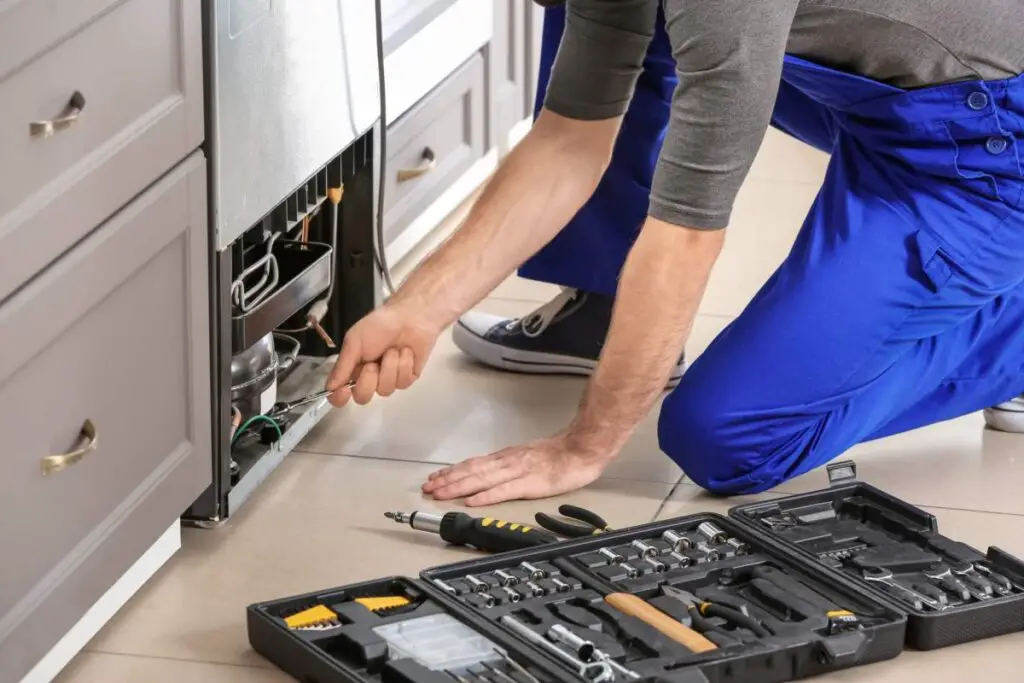
Conclusion
It is indeed possible to have a dishwasher without traditional plumbing arrangements. While dishwashers typically rely on water supply and drainage systems, alternative methods have been developed to accommodate situations where conventional plumbing is not available or feasible. By utilizing innovative solutions such as countertop dishwashers, portable dishwashers, and specialized plumbing adaptations, individuals can still enjoy the convenience and efficiency of a dishwasher in their homes.
One option for those without plumbing is the countertop dishwasher, a compact appliance designed to sit on the kitchen countertop and require minimal installation. These dishwashers usually have built-in water tanks for water supply and removable reservoirs for waste water. They can be connected directly to the sink faucet for water intake and feature a drainage tube that can be placed over the sink for wastewater disposal. Countertop dishwashers offer convenience and ease of use, making them an excellent choice for small living spaces or situations where plumbing modifications are not feasible.
Another alternative is the portable dishwasher, which operates similarly to a countertop model but is larger and designed to be wheeled to a desired location. Portable dishwashers often come with built-in water tanks and waste water reservoirs, eliminating the need for permanent plumbing connections. These versatile appliances can be connected to the sink faucet using adapters and offer similar cleaning capabilities as traditional built-in dishwashers. They provide a practical solution for individuals who require a dishwasher but do not have access to permanent plumbing arrangements.




